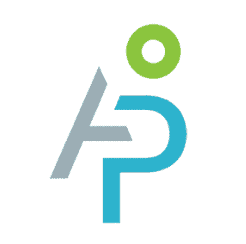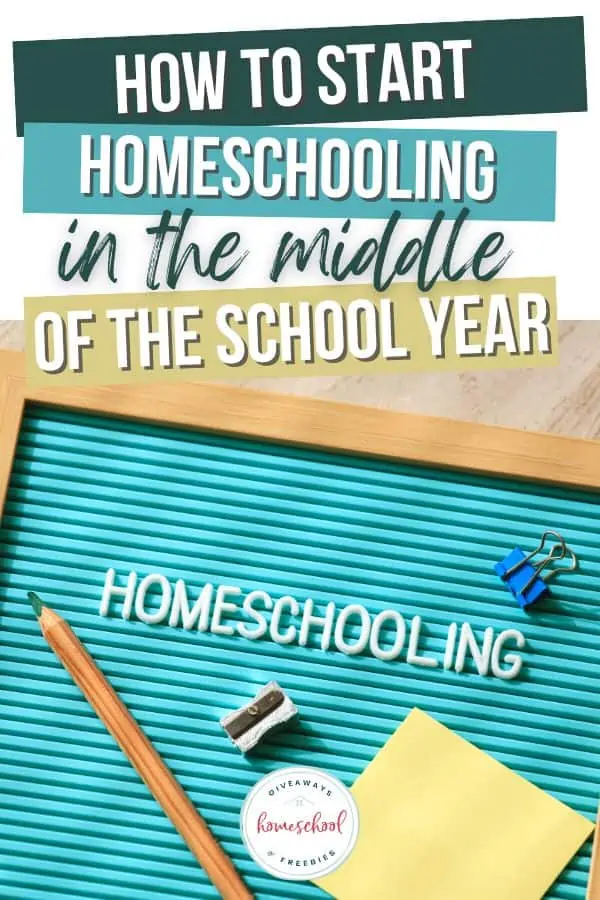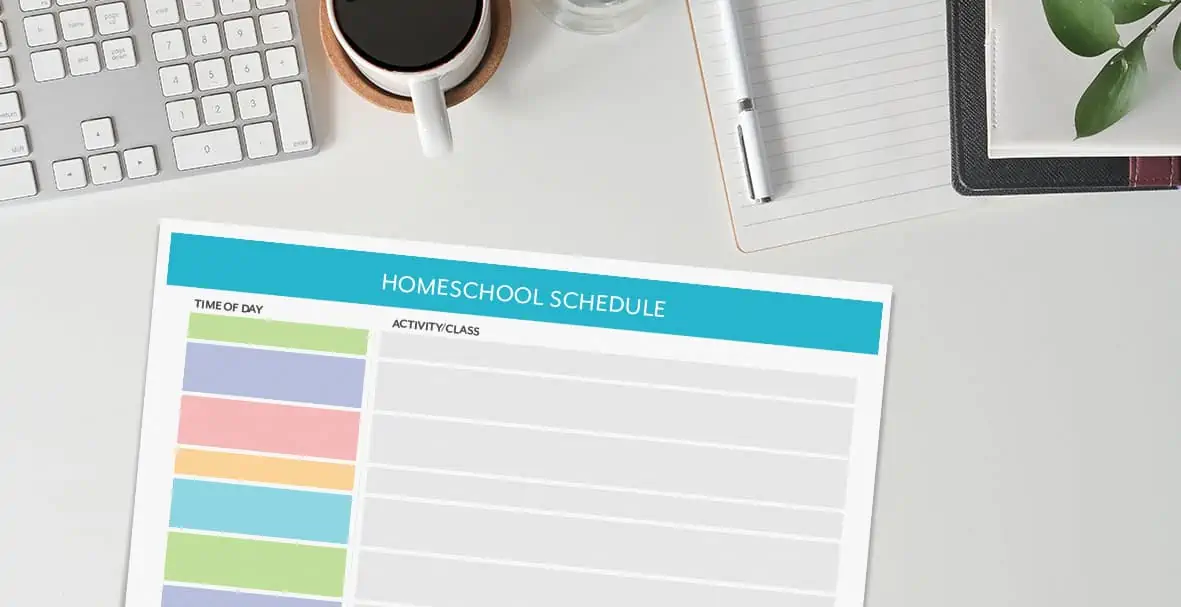How to Start Homeschooling in the Middle of the School Year
Published:
December 5, 2022

Contributor:
Alpha Omega Publications
Disclosure: This post may contain affiliate links, meaning if you decide to make a purchase via my links, I may earn a commission at no additional cost to you. See my disclosure for more info.
New homeschoolers who are transitioning out of the public school setting may be wondering what time of year is ideal for this change. The truth is that you can start homeschooling whenever you need to! When you’re meeting the unique needs of your kids, the starting point for homeschooling is up to you.
Can You Start Homeschooling in the Middle of the Year
Are you transitioning your kids out of the public school? You may be wondering “Can you start homeschooling in the middle of the year?”
The truth is that you can start homeschooling in the middle of the year.
When you want to know how to start homeschooling in the middle of the school year, take a deep breath and consider these details.
Yes, you absolutely can start homeschooling at any point in the year; you definitely don’t have to wait until the end of the year to make changes.
Your kids may need a different approach or they may have special needs that are better met at home. Whatever the reason for starting to homeschool in the middle of the year, the learning experience is most important, not when you make the change.
There are many benefits of homeschooling that make the transition absolutely worth it for most families.
How to Simplify The Mid-Year Homeschool Transition
You can simplify the mid-year homeschool transition by following the tips below. In fact, the semester break may be the perfect time to bring your child home for their education. But be sure to give yourself and your kids a lot of grace.
Things may be in upheaval for a few weeks or even months as you all get used to learning together in new and better ways.
Adjustment is normal and it may not be smooth. As long as you have a realistic mindset, you will be able to have a generally smooth transition to homeschool, even mid-year.
You Can Start Homeschooling Anytime
Yes, you can start homeschooling anytime. When you’re starting to homeschool mid-year, the most important thing is to do what’s best to meet your family’s needs. Don’t wait until the perfect time to start because there’s never a perfect time!
You’ll learn how to homeschool by jumping in and customizing your child’s education as you go.
Soon you’ll realize that your homeschooling does not need to replicate the methods of a traditional classroom. In fact, it’s probably a good idea not to!
Know Your State Homeschool Requirements
The first step is to know your state homeschool requirements. Your statewide homeschooling association can help you navigate the homeschool law where you live. Some state laws will require notification and paperwork to begin homeschooling.
Some states have far less oversight on homeschoolers.
Always start with your home schooling laws and then from there you can tailor your experience to meet your child’s needs. Homeschool co-ops are another excellent source of state homeschool requirement information.
Withdrawing Your Student from School
When you’re withdrawing your student from the public school system, there may be some paperwork to complete so they don’t get marked as truant. Your child’s school will be able to let you know what they need from you at the time of withdrawal.
You may also need to see if there are any withdrawal policies regarding any special education services your child may receive at school.
Get Records From the School
When you withdraw your student from school, make sure you get copies of all the relevant school records. This would include attendance records, report cards, and a transcript for your high school students.
If your child has been identified by the school as having a disability or if your child is in a special education program, you will also want records pertaining to that educational placement.
Send Your Letter of Intent to Homeschool
You will want to send a letter of intent to homeschool to your local school district. This notice of intent allows your district to update their paperwork and keeps your child from being marked for truancy.
Only include information that your state legally requires in your letter of intent. This will vary depending on where you live, but generally a letter of intent to homeschool will include your child’s name, grade, age, and the address of your homeschool.
Some states require curriculum objectives. Be sure not to over comply. The Homeschool Legal Defense Association is a good resource for each state’s letter of intent requirements.
Choose a Homeschool Curriculum
While it can certainly feel overwhelming to be responsible for finding a homeschool curriculum, there are several tips to keep in mind.
First, consider your child’s learning style when you choose a curriculum. There are so many curriculum options available for every style of learning. You’ll also want to consider what your teaching style is as a homeschool mom.
The best fit for another family may not be the best fit for yours.
Homeschool Approach
Also consider if you and your children would prefer a more hands-on approach or if they’d thrive with an independent learning style. Do you want your children to use living books, textbooks, or even online learning platforms?
There are so many options for homeschoolers, but you’ll want to narrow them down to a best fit for you in this particular season.
Homeschool Subjects
Next, focus on the core subjects first, then add in more as you are able. The main subject area courses are language arts and math. Then, you’ll want to add social studies, science, and even more courses like Bible, art, music, and so on.
Homeschool Groups
A great source of classes, extracurricular activities, and socialization for your children is local homeschool groups. The local library will also become your best friend! Let your librarians know what your kids will be studying this year and enlist their help in finding great resources and books.
Don’t be paralyzed when choosing a homeschool curriculum!
Homeschool Curriculum Options
You can also change it later if it’s not working. Check with local support groups to find recommendations. There are many online courses and online resources you could use.
An all-in-one boxed curriculum meet the needs of your family as you make this transition from public school. Or, if you’re more confident, consider piecing together your own curriculum.
Family-Style Homeschooling
Of course, another aspect of choosing curriculum is the number of children you are homeschooling and what the grade level makeup of your family is this year. Things may look different if you have mostly younger children as compared to having middle and high schoolers.
And then remember that curriculum may change and grow through the years as you become more confident in your role as a homeschool parent. Additionally, you will gain the ability to be flexible in your curriculum choice.
Finally, remember that you are distinctly able to meet your child’s educational needs in a way that a public school teacher just isn’t able to do.
Plan Your Homeschool Day
Now you’ll want to plan your homeschool day. Remember that a homeschool schedule doesn’t need to look like the traditional school schedule. Your children can work at their own pace and you can enjoy flexible school days.
In fact, an individualized home instruction plan is one of the biggest advantages of homeschooling! Your homeschool journey won’t look exactly the same as another family’s journey, and that’s perfectly fine.
But everyone does need to know what needs done each day in order to have educational experiences that are both successful and enjoyable. Here’s a printable daily schedule that will help you and the kids prioritize the school work and also have plenty of time for normal life.
Homeschool Routines
Your homeschool day needs to include routines to be sure that your child’s education is not neglected, but of course you’ll also need time for real life! Things like chores still need to be done, plus field trips are a fun activity, then there’s music practice, sports practice, and meal prep.
When you create a flexible daily homeschool routine, you’ll be able to get all the priorities done, which include all the subject matter in your child’s homeschool plan plus real life and homemaking. You might even work on the side or volunteer. Yes, you can include this in your homeschool day.
In Conclusion
When you consider starting to homeschool in the middle of the year, just remember that your family’s needs always come first. Homeschool families find that it doesn’t really matter when they start, it’s just important that you bring the kids home and allow them to thrive.













